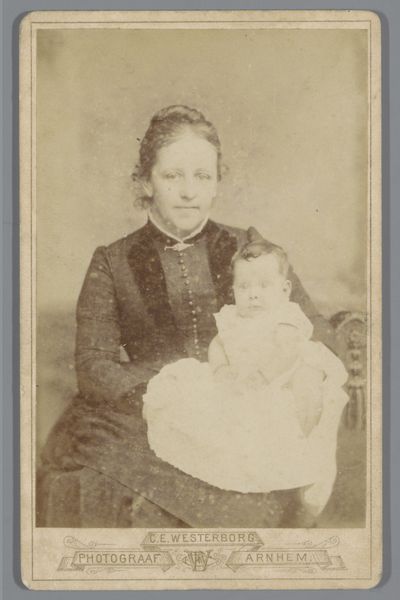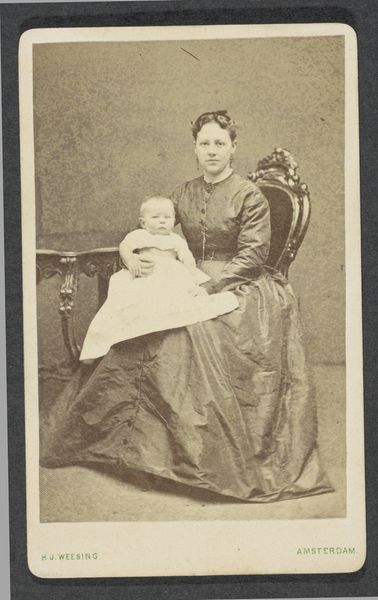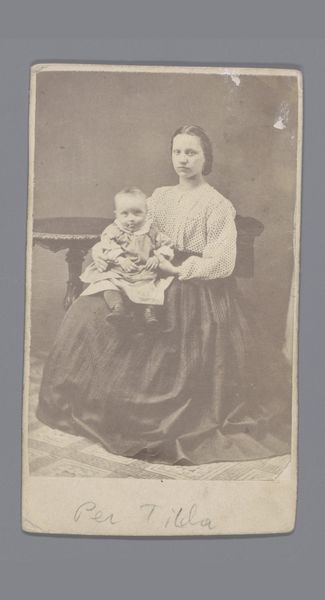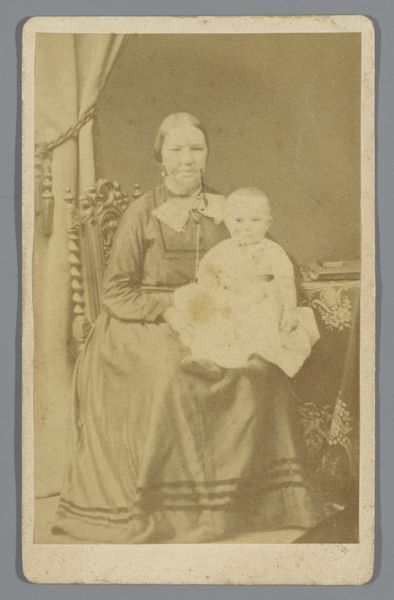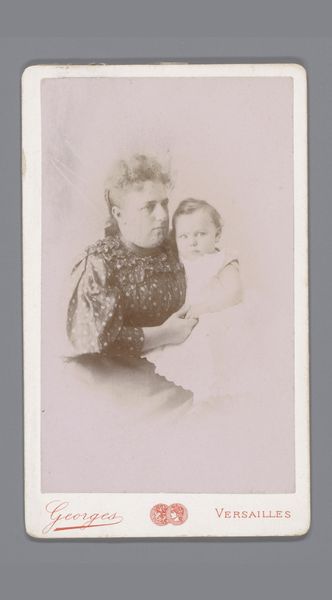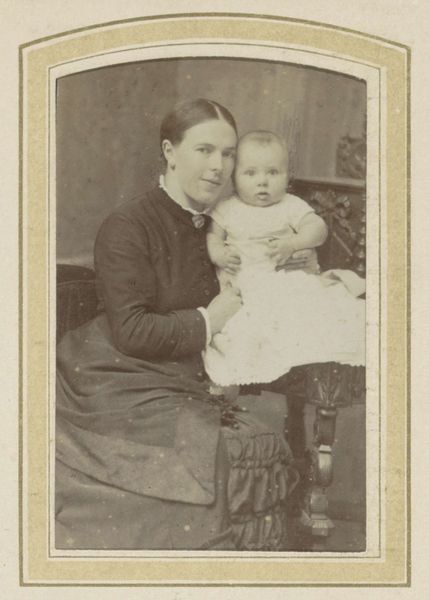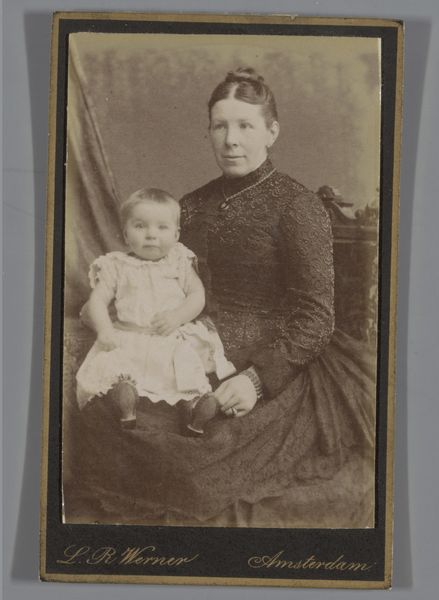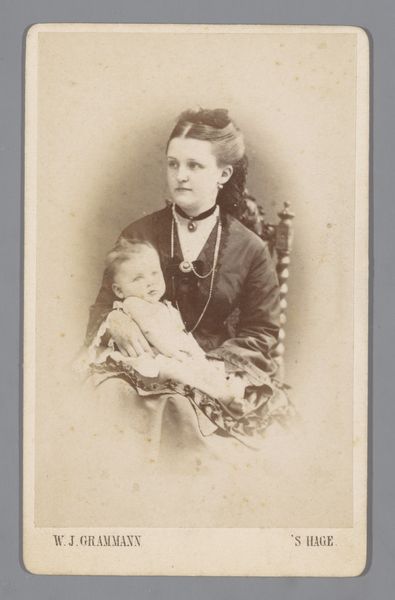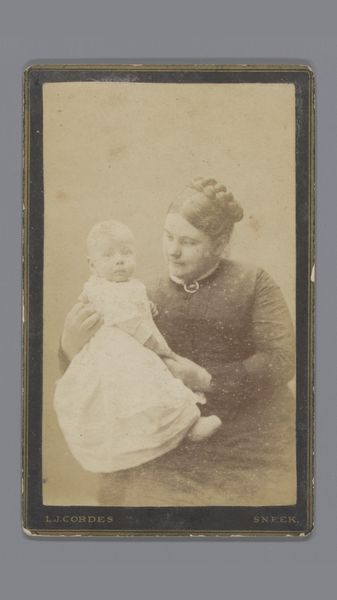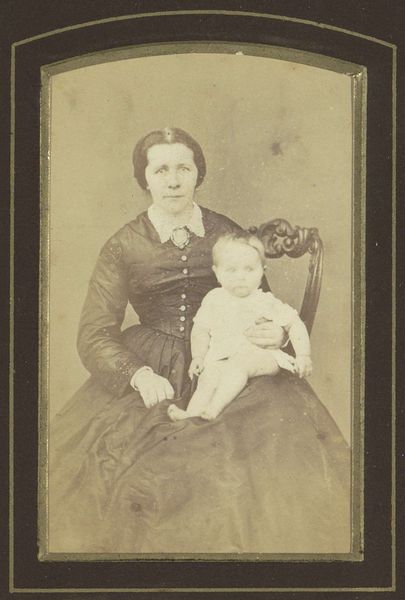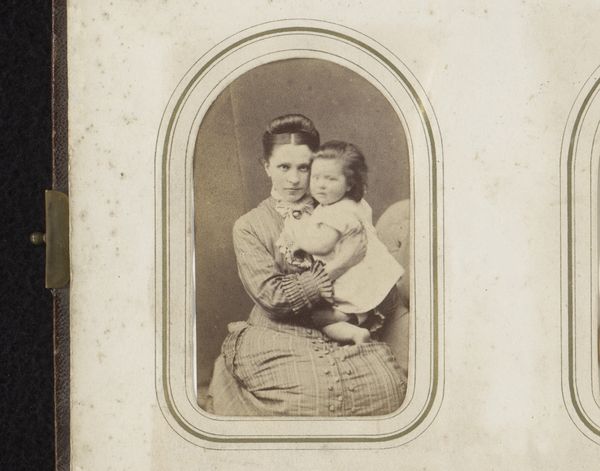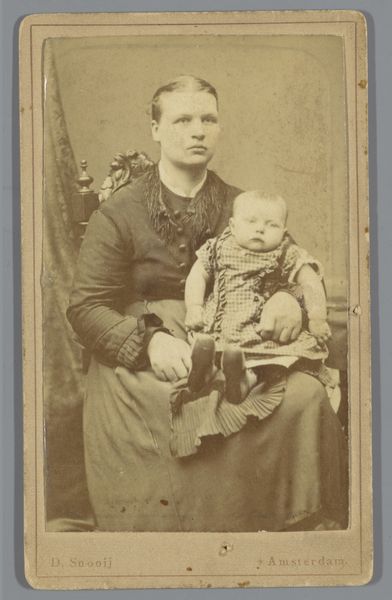
photography
#
portrait
#
photography
#
genre-painting
Dimensions: height 100 mm, width 62 mm
Copyright: Rijks Museum: Open Domain
This portrait of an unknown woman and child was made by the Klumpes Brothers in the Netherlands, most likely in the late 19th century. Small photographic portraits like this were popular at the time, especially among the rising middle classes. Photography studios arose to meet this demand, offering families and individuals the opportunity to record their likeness for posterity, even without the means to commission a painting. The woman’s dark dress and hairstyle would be consistent with the fashions of the 1880s. The image creates meaning through social codes of the time. The mother and child are dressed in their best, a reflection of the social pressure to present oneself in a respectable manner. This seemingly simple portrait is a window into the values and aspirations of a particular time and place. To understand this image better, we might research the Klumpes Brothers studio and the market for photography in the Netherlands at this time. Old newspapers and social histories may reveal more about the sitters' lives and the cultural significance of such portraits.
Comments
No comments
Be the first to comment and join the conversation on the ultimate creative platform.
